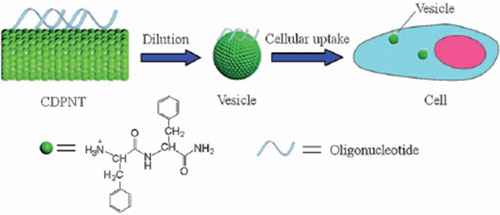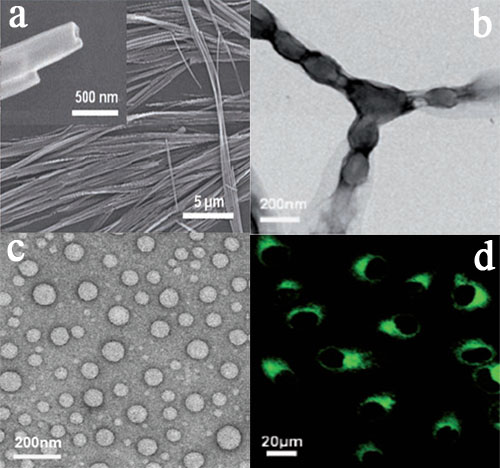Many biological molecules in organism can self-assemble into nanostructures. Peptide-based nanostructures can be used as scaffolding for tissue repair in regenerative medicine biological surface engineering and mimicing ion channels in the biomembrane. Such nanomaterials have potential applications in gene and drug delivery.
With the supports of Chinese Academy of Science and National Natural Science Foundation Prof. Junbai Li’s group from the CAS Key Laboratory of Colloid Interface Science and Chemical Thermodynamics made progress in the molecular assembly of biomimetic system. They found that a cationic dipeptide can self-assemble into nanotubes at physiological pH values. Such self-assembled cationic dipeptide nanotubes are able to convert into vesicles spontaneously upon dispersion dilution and thus carry single-stranded DNA into HeLa cells across the biomembrane. With the biocompatibility bioabsorption and recyclability of the peptide-based nanomaterial it becomes possible to exploit the peptide nanostructures as a new class of molecular transporter for the delivery such as drugs genes and proteins.
Angew. Chem. Int. Ed. (2007 46 2431-2434.)

Fig.1 Proposed transition of the CDPNTs into vesicles for oligonucleotide delivery.

Fig.2 a) SEM image of the CDPNTs (inset: a hollow nanotube at greater magnification); b) TEM image of the intermediate state of the conversion of CDPNTs into vesicles; c) TEM image of the vesicles; d) CLSM image of cells after incubation for 24 h with the complexes of CDPNTs and fluorescently labeled ssDNA.
, |
